Overview of Hydroelectric Power
While today hydropower is mostly viewed as evil, its existence must be understood in the historical context of the American West needing cheap and reliable power starting in the 1930s in order for the US to continue building out its overall industrial and manufacturing infrastructure. Seattle,
Portland, etc, would really not have grown to become the cities they are without hydro power.
Many of these projects, like hoover dam, were genuine remarkable projects that showed the world what American ingenuity looked like. Believe it or not, there was a time that was important and there was a time that people took pride in their work. Hoover Dam reflects all of this.
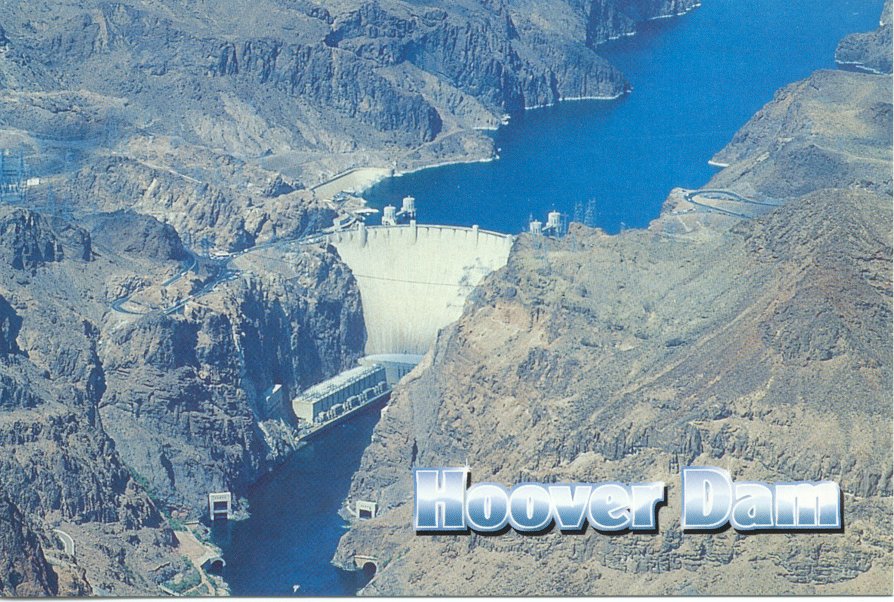
To really understand things in this historical context, you should really watch all 6 parts of this excellent documentary (made in 1997) about the abuse of the Colorado River. That is, this is the first river to ever come under complete human control.
The basic components and operations of a hydroelectric dam are shown below.
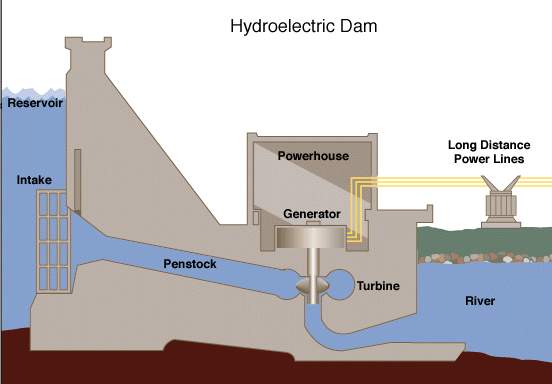
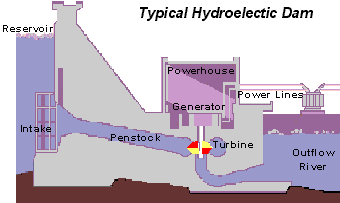
The figure below shows the number of "free flowing rivers" of length more than 1000 km (a lot of these are in North
America) denoted by the green line where as the bars represent individual dam construction on these rivers.
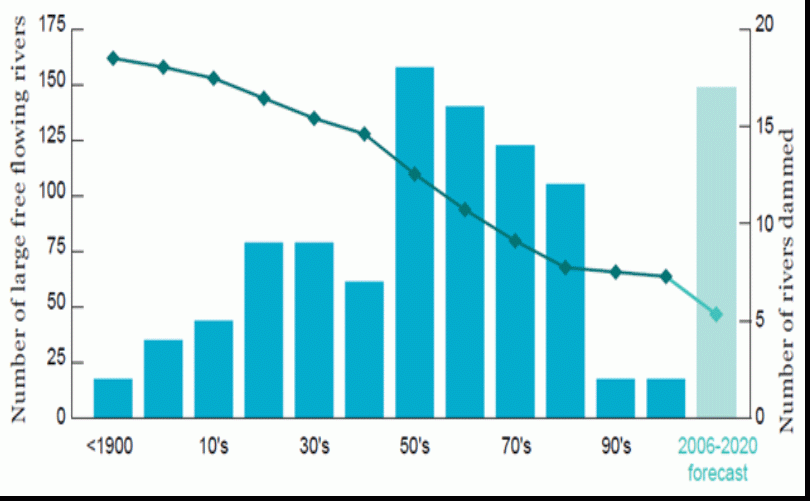
The projected increase in dam construction is occurring mostly
in the following countries:
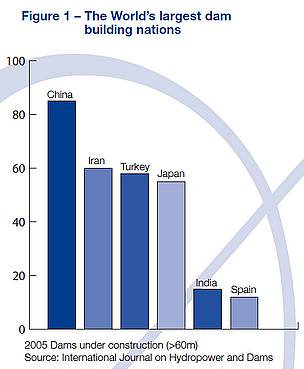
Again within the context of this time (1930 - 1980 is when most of the US hydro infrastructure was deployed - see image above) - it's useful to
compare (clean) hydropower with other (dirty) sources of electricity generation.
Disadvantages of power plants that use coal, oil, and gas fuel:
Advantages to hydroelectric power:
However, since hydropower requires significant river flow, it becomes
a regional solution, not a national one.
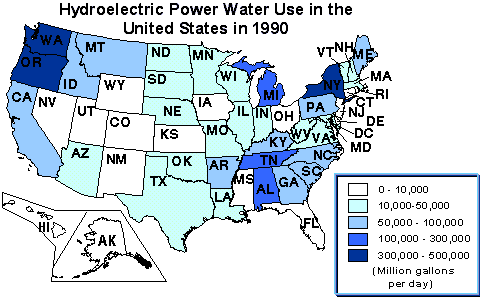
California has the biggest hydroelectric
facility network in the US with about 400 individual dams that together supply about 15000 MW of continuous power. Hydro
Power in California
The Pacific Northwest has 58 hydroelectric dams the provides 63% of total
electricity generated in this region.
The PNW Hydroelectric System:
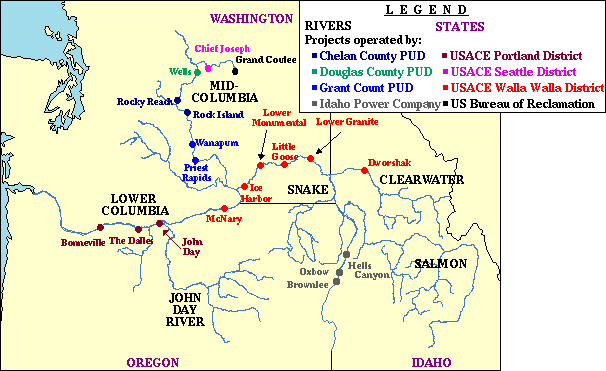
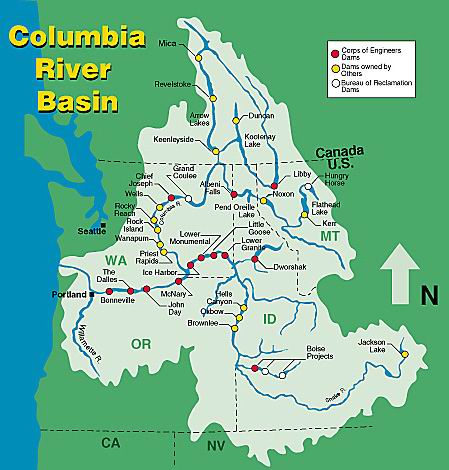
Much of this regional resource is managed by
The Bonneville Power Administration
But note that this resource has high seasonal variance (and now high annual variance
due to highly variable snowpack . Indeed, one of the primary reasons that
BPA is building so many windfarms in WA and OR is to compensate for reduced steam flow in the Columbia river basin due both to
climate change and long term drought in the American West.
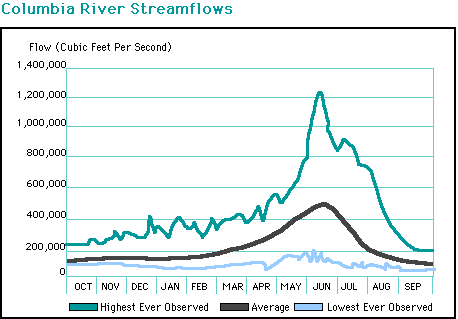
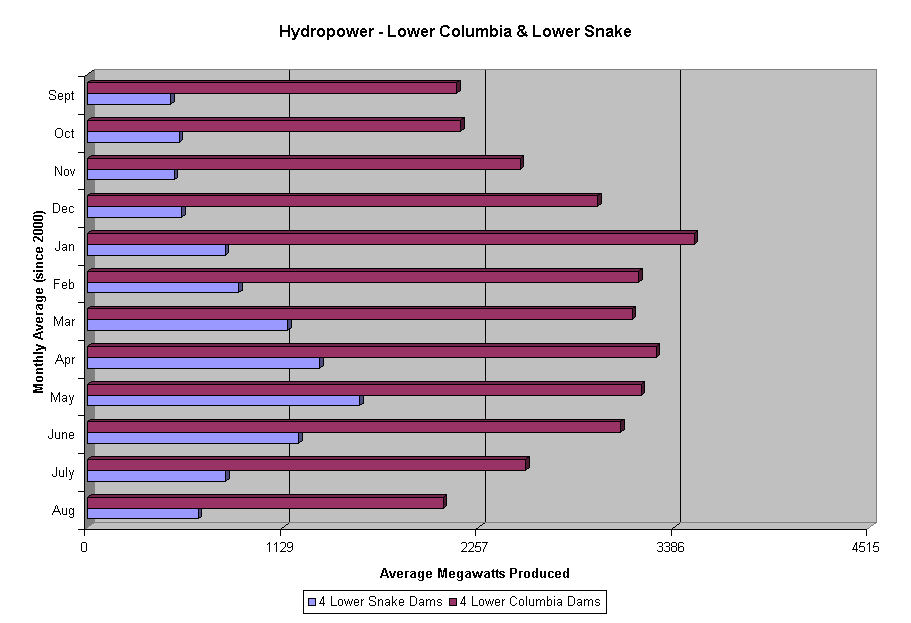
Although it is unlikely that any future dams will be built (for a variety of reasons)
it is nonetheless useful to assess the regional un-developed hydro-resource that is
potentially available:
The averages from several studies yield the following:
- WA
 11,000 MW (significant) 11,000 MW (significant)
- OR
 6,000 MW (respectable amount) 6,000 MW (respectable amount)
- CA
 14,000 MW (that's significant) 14,000 MW (that's significant)
- ID
 9,500 MW (very significant relative to local demand) 9,500 MW (very significant relative to local demand)
- MT
 5,000 MW 5,000 MW
So that's a total of 45,000 MW  is it possible to use other regional
renewable resources to also get 45,000 MW of power? Not very likely. is it possible to use other regional
renewable resources to also get 45,000 MW of power? Not very likely.
|










 11,000 MW (significant)
11,000 MW (significant)